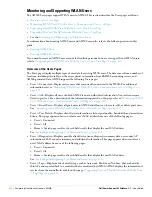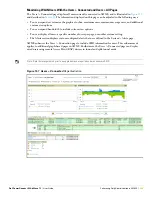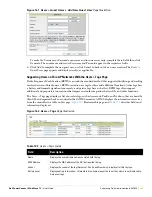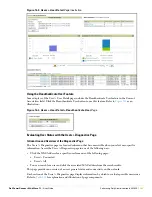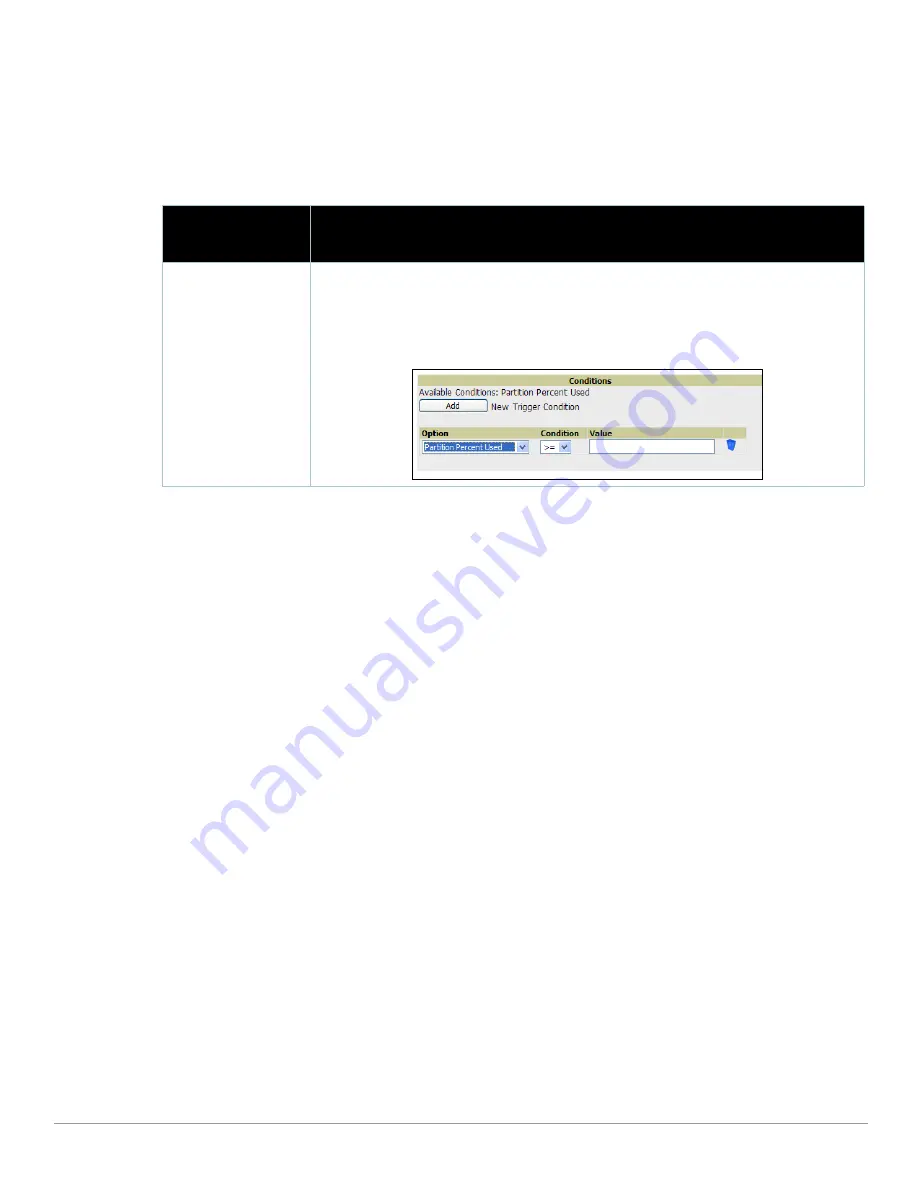
Dell PowerConnect W AirWave 7.1
| User Guide
Performing Daily Administration in AWMS |
225
Setting Triggers for AWMS Health
After completing steps 1-3 in
“Creating New Triggers” on page
214
, perform the following steps to complete
the configuration of IDS-related triggers.
a. If you have not already done so, choose the Disk Usage trigger type from the drop-down Type menu. See
Figure 142
for trigger types.
Table 118
describes the condition settings for this trigger type
.
b. Delete conditions for any trigger as desired by clicking the trash can icon to the right of the condition to
be removed.
c. Click Save. The trigger appears on your next viewing of the System > Triggers page with all other active
triggers.
d. You can edit or delete any trigger as desired from the System > Triggers page.
To edit an existing trigger, click the Pencil icon next to the respective trigger and edit settings in the
Trigger Detail page described in
Table 112
.
To delete a trigger, check the box next to the trigger to remove, and click Delete.
e. Repeat this procedure for as many triggers and conditions as desired. Refer to the start of
“Creating New
Triggers” on page
214
to create a new trigger.
Delivering Triggered Alerts
AWMS uses Postfix to deliver alerts and reports via email, because it provides a high level of security and
queues email locally until delivery. If AWMS is located behind a firewall, preventing it from sending email
directly to a specified recipient, use the following procedures to forward email to a smarthost.
1. Add the following line to /etc/postfix/main.cf:
relayhost = [mail.Aruba.com]
where mail.Aruba.com is the IP address or hostname of your smarthost
2. Run service postfix restart.
3. Send a test message to an email address:
Mail -v xxx@xxx.com
Subject: test mail
.
CC:
4. Press Enter.
5. Check the mail log to ensure mail was sent
tail -f /var/log/maillog
Table 118
Disk Usage Trigger and Condition Settings
AWMS Health
Trigger
Description
Disk Usage
This trigger type is based on the disk usage of the AMP (AWMS) system. This type of trigger indicates
that disk usage for the AWMS server has met or surpassed a defined threshold. Click Add New
Trigger Condition to specify the disk usage characteristics that trigger an alert. The Option, Condition,
and Value fields allow you to define the numeric count of partition percent used.
Figure 153
Condition Settings for Disk Usage Trigger
Summary of Contents for PowerConnect W Airwave 7.1
Page 1: ...Dell PowerConnect W AirWave Version 7 1 User Guide ...
Page 10: ...10 Dell PowerConnect W AirWave 7 1 User Guide ...
Page 30: ...30 Installing AWMS Dell PowerConnect W AirWave 7 1 User Guide ...
Page 194: ...194 Creating and Using Templates Dell PowerConnect W AirWave 7 1 User Guide ...
Page 260: ...260 Performing Daily Administration in AWMS Dell PowerConnect W AirWave 7 1 User Guide ...
Page 294: ...294 Creating Running and Emailing Reports Dell PowerConnect W AirWave 7 1 User Guide ...
Page 302: ...302 Using the AWMS Helpdesk Dell PowerConnect W AirWave 7 1 User Guide ...
Page 304: ...304 Package Management for AWMS Dell PowerConnect W AirWave 7 1 User Guide ...
Page 308: ...308 Third Party Security Integration for AWMS Dell PowerConnect W AirWave 7 1 User Guide ...
Page 314: ...314 Access Point Notes Dell PowerConnect W AirWave 7 1 User Guide ...
Page 316: ...316 Initiating a Support Connection Dell PowerConnect W AirWave 7 1 User Guide ...
Page 318: ...318 Cisco Clean Access Integration Perfigo Dell PowerConnect W AirWave 7 1 User Guide ...
Page 330: ...330 Third Party Copyright Information Dell PowerConnect W AirWave 7 1 User Guide ...
Page 334: ...334 Index Dell PowerConnect W AirWave 7 1 User Guide ...


















